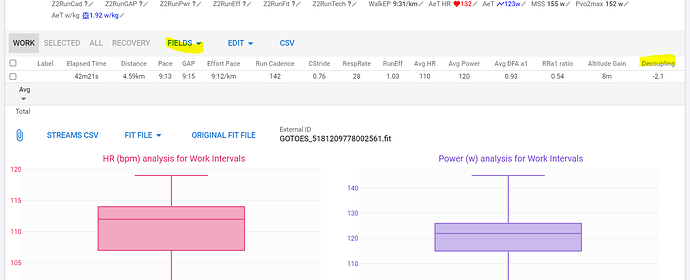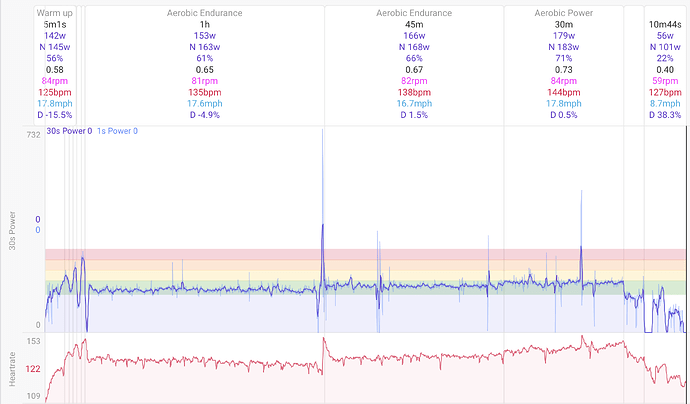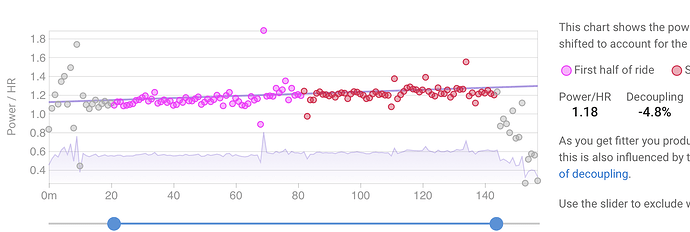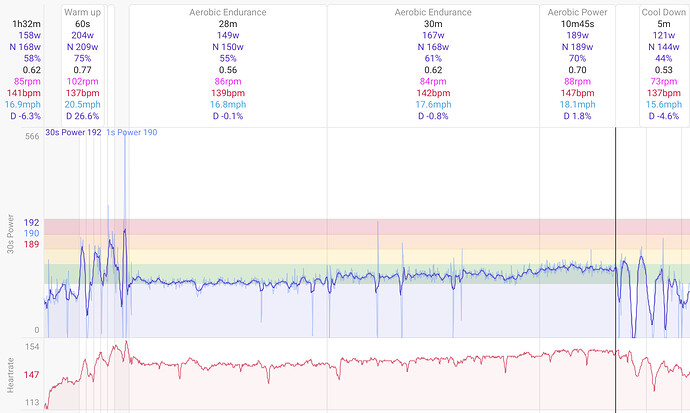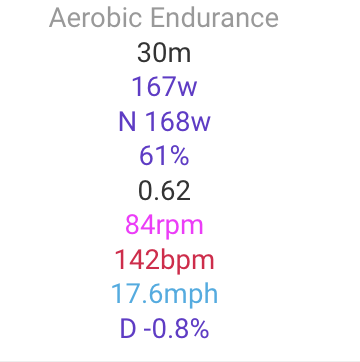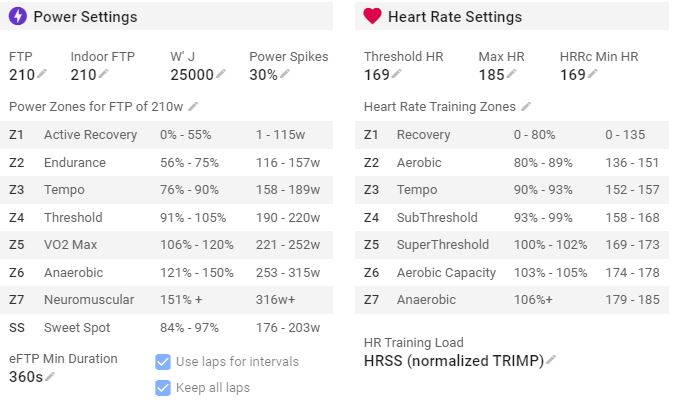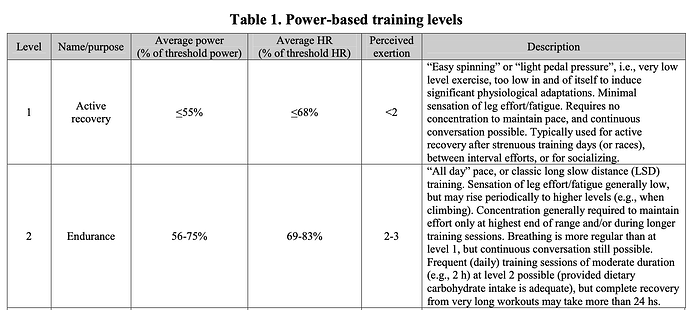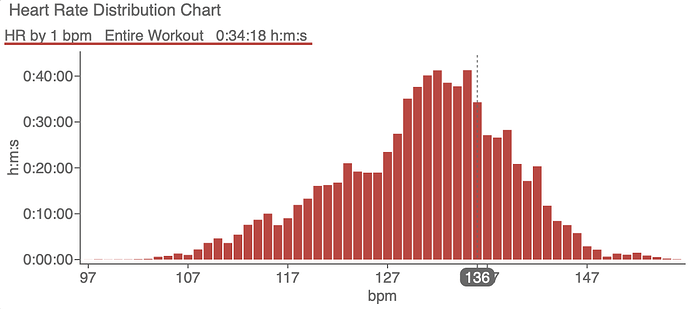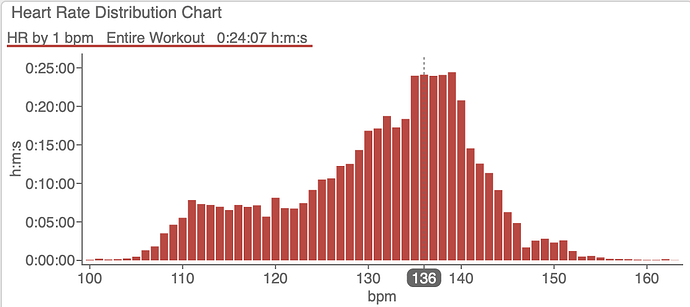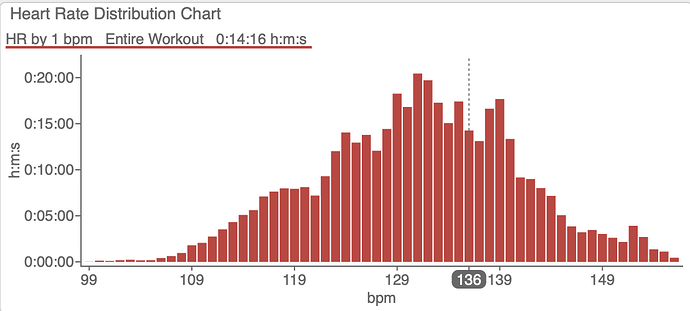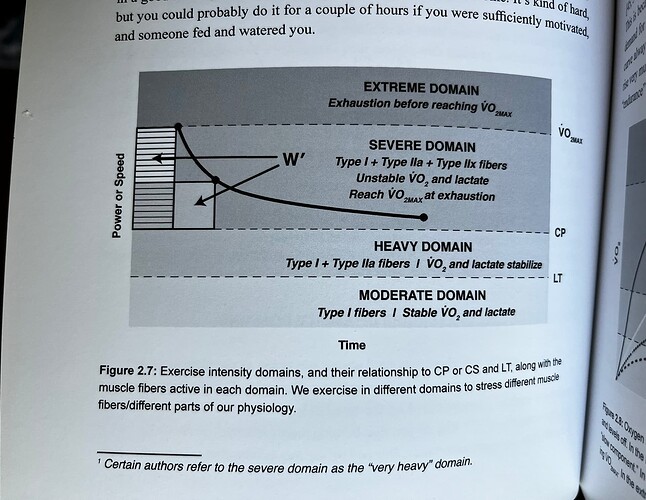Not the same. Last one had a load of 100. Only reason the normalized power was close was due to the extended rest pace at the end. Overall times, distance, and power of the workouts were very different. A difference of 7 cadence is significant.
Consistent rides outside are definitely challenging for comparison due to terrain, traffic, roads, etc. but are more consistent if you pick same route on flat road with few interruptions. Inside on the machine I would suggest you keep everything the same.
After warmup, settle in at a cadence, set your resistance, and keep that cadence throughout. Rides are best at the same length. Heart rate will rise but that’s the decoupling you want to measure and compare ride to ride. Then on the Intervals power page for the activity, review and compare the decoupling chart at the bottom for progress from ride to ride. Improvement takes time. At a point when your decoupling is under 5%, bump up the ride.
These kinds of rides are best done over 2 hours but in my experience a good hour plus warmup and cooldown time, so 1 hour 25 minutes for me, can give useable results.
Imo anyway. I’m not a coach.
And of course what @MedTechCD says. ![]()

